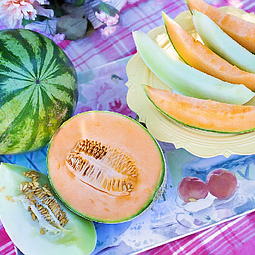Spring Foraging in Eastern Washington
May 1, 2013 at 11:45 a.m.
Bringing home free tasty food from the outdoors and combining it with a delightful drive through wildflower country is a great way to have fun.
Harvesting asparagus growing wild on public land in eastern Washington can make for a good start of a productive May outing. With discoveries of additional plants from each outing adding to your inventory of picking spots, eventually one is able to harvest a significant quantity in a short time. We often gather over ten pounds of tender stalks on a single trip and share what we do not use with the local food bank.
For Linda and I finding the asparagus is entrusted to last minute guesswork. We have spent considerable time in Eastern Washington during the fall and looked for the distinctive red asparagus berries, attached to the often three-foot-tall yellow, feathery stalks. Some stalks may still be visible in the spring, if winter weather has not been too harsh.
Areas of prime consideration are along side of well-irrigated fields that adjoin the road shoulders. Seeds transported by birds and dropped near fence posts of irrigated field edges or other wetlands establish the deep root system necessary to make asparagus prosper. The Yakima area, Othello, Moses Lake and Quincy are areas we visit, although they can be found in numerous other locations. Driving back roads along irrigation canals or where seep has accumulated to form wetlands is our old-fashioned way of locating sites – but remembering to write down your route helps, too.
Finding wild asparagus is usually a sign of several more growing nearby. Plants will reproduce readily if they have enough water. Since an asparagus plant may live as long as 100 years, older plants tend to develop numerous companions. Microclimates and available moisture will greatly affect plant development. Plants may be just emerging in one area while 15 miles away they are already beginning to turn to seed.
Plants may still be harvested if they begin the transition to seed, however in a few days after starting, they will become too soft, and lose the texture necessary for good table fare. Harvesting plants tends to defer the process of going to seed. During prime harvesting in late May or early June, it is possible to harvest the same plant twice in the same day. Earlier in the month you may study a plant start for over a week before it is ready. Breaking the plant off by bending it as you would just prior to cooking at home is the proper technique. This will allow the plant to continue growing while assuring that the portion you have acquired is ready for the pan, with only a brief washing. Washed and freshly cooked, the asparagus adds a delicate flavor to the well-planned meal.
May is also the time to harvest morel mushrooms. Leave time at the end of the day to stop and look for them near cottonwood trees that are just starting to form their leaves. We find them from Easton to Ellensburg along I-90 or near Blewett Pass. This year should be better than average if you hunt burned-out areas from last fall’s wildfires near the pass by Ellensburg.
Wild onions and camas bulbs can be added to your foraging targets and also add to your dining experience. And don’t forget to sniff the wildflowers you see. Spring foraging rewards us in numerous ways and once tried, becomes an annual event.





